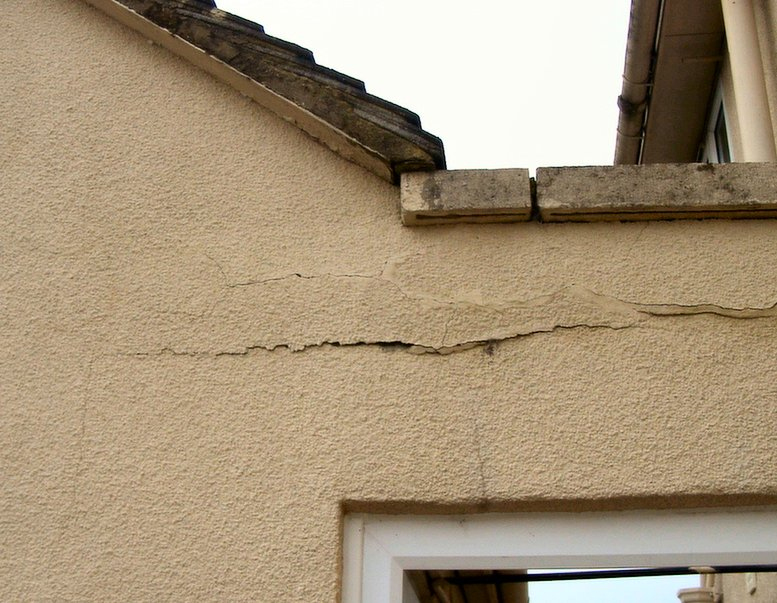Cracking in buildings BR 292
BRE Group (BRE) is a world-leading centre of built environment expertise, research and training, and includes a third-party approvals organisation offering certification of products and services to international markets.
The first edition of the BRE guide Cracking in buildings was published in 1996. The second edition, written by Ron Bonshor, Lesley Bonshor and Roger Sadgrove, was published in March 2016. Its aimed at all who own, occupy, design, build and maintain buildings.
Buildings and other built structures are moving all the time, but usually these movements are so small as to be unnoticeable. However, if a structure is unable to accommodate movement, cracking is likely to occur. The appearance of cracks can be visually unattractive and disconcerting for occupants, and if left untreated can affect the integrity, safety and stability of the structure.
The BRE guide describes the basic materials science behind the subject and explains how and why cracks occur. It provides a source of relevant information and provides a systematic approach for the reader to follow.
The first part looks at the causes of and mechanisms behind cracking, and the use of joints as safeguards against cracking. The second part examines the application of the science, and how cracking is effected by temperature, moisture, chemical and foundation movement. Appendices cover the classification of visible damage to walls, and provide a suggested approach to crack investigation.
This second edition updates references and aspects of the methodology that have changed since the first edition.
You can view a sample of, and purchase the book here.
[edit] Related articles on Designing Buildings Wiki
- BRE articles on Designing Buildings Wiki.
- BRE Buzz.
- BRE Trust.
- Burland scale.
- Cracking and building movement.
- Defective Concrete Blocks Grant Scheme.
- Defects in brickwork.
- Defects in construction.
- Defects in stonework.
- Efflorescence.
- Foundations.
- Ground heave.
- Home quality mark.
- Latent defects.
- Pyrite and mica redress issues in Dail Eireann.
- Reversible and irreversible expansion.
- Settlement.
- Thermal expansion.
- The history of fabric structures.
- Why do buildings crack? (DG 361).
[edit] External references
Featured articles and news
Government consultations for the summer of 2025
A year of Labour, past and present consultations on the environment, the built environment, training and tax.
CMA competitiveness probe of major housing developers
100 million affordable housing contributions committed with further consultation published.
Homes England supports Greencore Homes
42 new build affordable sustainable homes in Oxfordshire.
Zero carbon social housing: unlocking brownfield potential
Seven ZEDpod strategies for brownfield housing success.
CIOB report; a blueprint for SDGs and the built environment
Pairing the Sustainable Development Goals with projects.
Types, tests, standards and fires relating to external cladding
Brief descriptions with an extensive list of fires for review.
Latest Build UK Building Safety Regime explainer published
Key elements in one short, now updated document.
UKGBC launch the UK Climate Resilience Roadmap
First guidance of its kind on direct climate impacts for the built environment and how it can adapt.
CLC Health, Safety and Wellbeing Strategy 2025
Launched by the Minister for Industry to look at fatalities on site, improving mental health and other issues.
One of the most impressive Victorian architects. Book review.
Common Assessment Standard now with building safety
New CAS update now includes mandatory building safety questions.
RTPI leader to become new CIOB Chief Executive Officer
Dr Victoria Hills MRTPI, FICE to take over after Caroline Gumble’s departure.
Social and affordable housing, a long term plan for delivery
The “Delivering a Decade of Renewal for Social and Affordable Housing” strategy sets out future path.
A change to adoptive architecture
Effects of global weather warming on architectural detailing, material choice and human interaction.
The proposed publicly owned and backed subsidiary of Homes England, to facilitate new homes.
How big is the problem and what can we do to mitigate the effects?
Overheating guidance and tools for building designers
A number of cool guides to help with the heat.
The UK's Modern Industrial Strategy: A 10 year plan
Previous consultation criticism, current key elements and general support with some persisting reservations.
Building Safety Regulator reforms
New roles, new staff and a new fast track service pave the way for a single construction regulator.


























